Improving pigs weaned per 100 females per day has a financial impact on every farm above pigs weaned per mated female per day.

Last month we started the conversation on looking at different ways to measure sow lifetime performance, this month we continue looking at the same data but in regards to disease impact and how to improve sow lifetime performance.
We all know that disease has an impact on the performance of the farm. The impact looks different for each farm and each disease. Chart 1 shows all 15 farms and the pigs per 100 females per day for the last eight years. Of the 15 farms we looked at in last month’s column, seven of them were impacted by disease in 2014. Those seven farms are shown in Chart 2, each impacted differently. In Chart 3, there are five farms charted that were not impacted by disease, a very different picture of improvement over the last eight years.
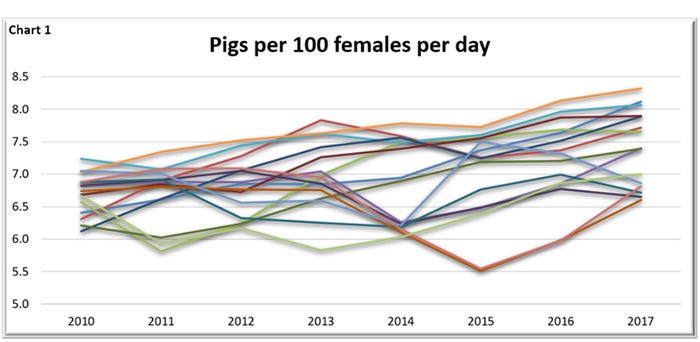
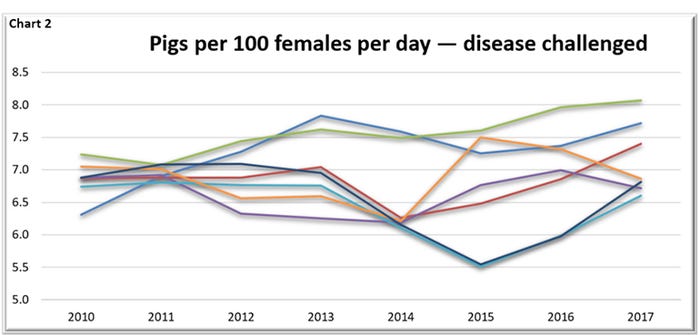
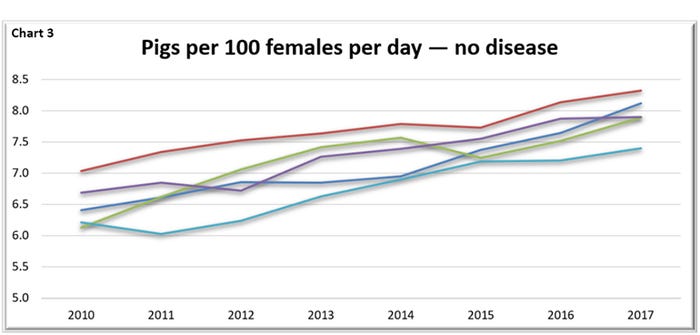
In Chart 4 and Chart 5 we look at two of those farms and compare the three measurements looked at in last month’s column, pigs weaned per mated female on the blue line, pigs per lifetime on the red line and pigs per 100 sows per day on the green line. The performance of each farm was different prior to the disease challenge and also impacted drastically different by the disease.
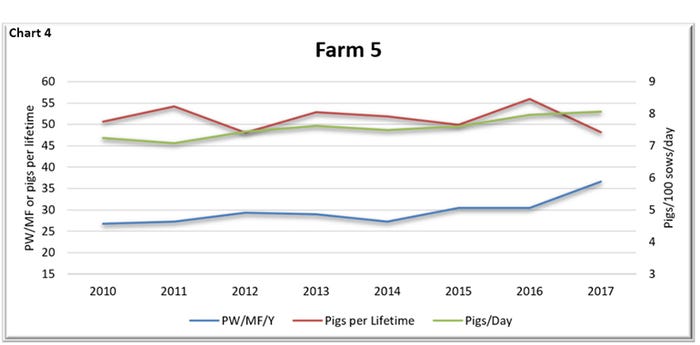
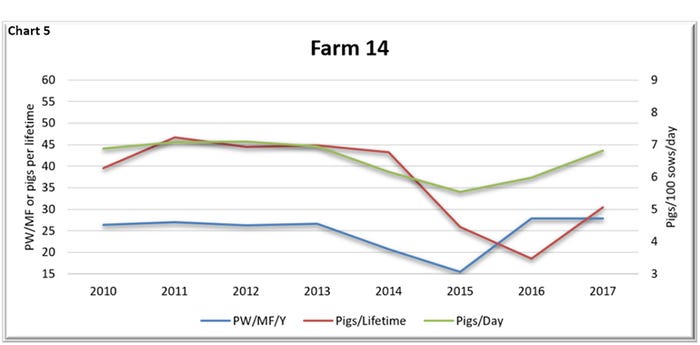
In Chart 6, a farm that was not impacted by disease compares the three measurements. In all three of the individual farm graphs it shows that the pigs weaned per mated female and the pigs per 100 females per day are most similar to each other. With that said then why would you consider looking at another measurement instead of continuing to use pigs weaned per mated female? The numbers measure two very different things.
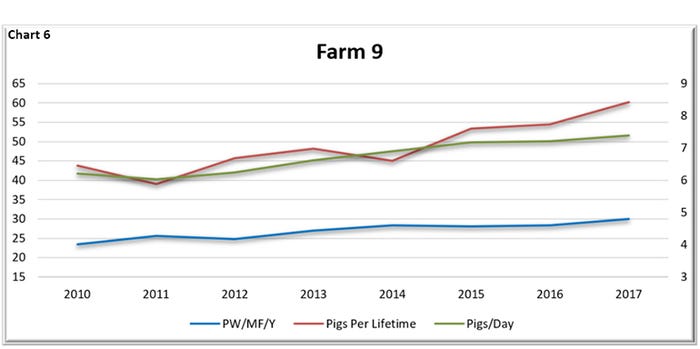
Pigs weaned per mated female
Includes only the mated females in the herd in the given time period
Includes only the pigs weaned in the given period
Pigs weaned per 100 females per day
Includes all gilts and sows culled in a given time period (we used one-year time periods)
Includes the number of days each animal was in the herd
Includes that number of pigs weaned only from those removed animals over their lifetime.
How do you improve pigs weaned per 100 females per day?
Not all gilts delivered to the farm should enter the herd, farms need to be more critical of structure of gilts to help ensure their stay ability in the farm.
Effective heat detection, not just of gilts but also with finding open sows timely to reduce nonproductive days.
Individual animal care and reducing sow death loss to improve longevity of females.
Being diligent with biosecurity to reduce chances of disease impact and reduced production as a result of it.
Training of staff on the importance of sow retention, longevity and the economic impacts that it has on your operation.
Improving pigs weaned per 100 females per day has a financial impact on every farm above pigs weaned per mated female per day not just because of the inclusion of gilts and all nonproductive days, but also because of the reduction of new gilts entering the herd. If you can produce the same number of pigs with fewer animals entering the herd, you are reducing costs of animals purchased, vaccinations and development.
Table 1 provides the 52-week rolling averages for 11 production numbers represented in the Swine Management Services Production Index. The numbers are separated by 90-100%, the 70-90%, the 50-70%, the 30-50% and the 0-30% groups. We also included the 13-week, 26-week and 12-quarter averages. These numbers represent what we feel are the key production numbers to look at to evaluate the farm’s performance.
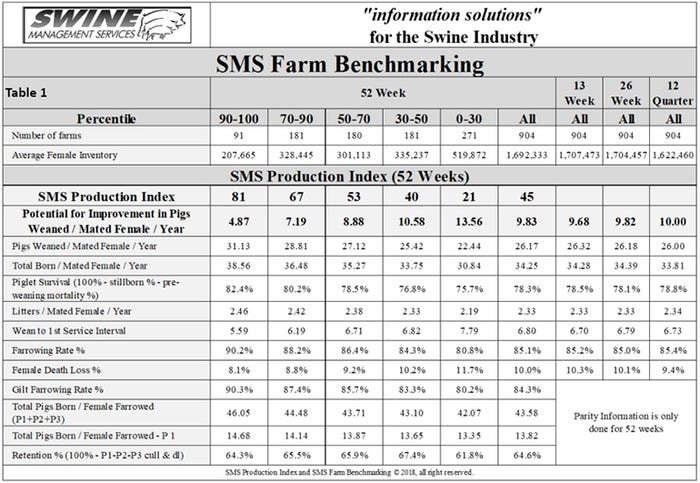
At SMS, our mission statement is to provide “Information solutions for the swine industry”. We feel with the creation of different SMS Benchmarking databases for all production areas we now have more detailed information to share with the swine industry. If your farm would like to be part of the SMS Benchmarking databases call us. We enjoy being a part of the National Hog Farmer team. Previous columns can be found at NationalHogFarmer.com.
If you have questions or comments about these columns, or if you have a specific performance measurement that you would like us to write about, please contact Mark Rix, Ron Ketchem or Valerie Duttlinger.
About the Author(s)
You May Also Like



